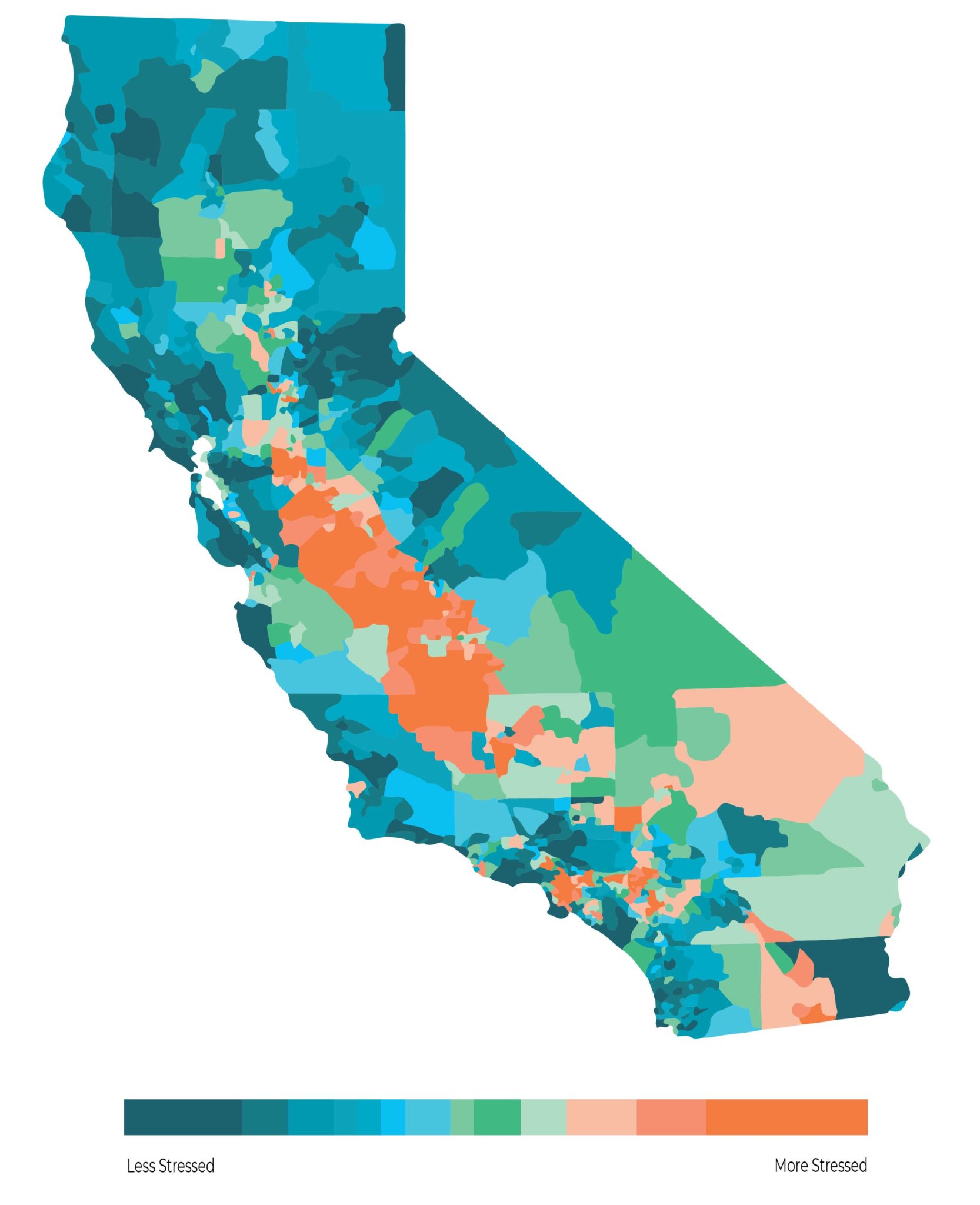As the COVID-19 pandemic has temporarily halted almost all economic activity and travel, cities around the world have seen a significant improvement in air quality and lowered greenhouse gas emissions. With people working from home, electricity demand has also fallen, as has demand for oil and gas — the price of oil has plummeted to below $20 USD a barrel. An analysis from Carbon Brief estimates that global carbon dioxide emissions are likely to decrease by more than 4% compared to last year.
Clear skies and empty roads are now being reported in places that rarely experience them. In India, New Delhi, the world’s most polluted city, has seen some of the cleanest air in decades; in China, air pollutants like nitrogen oxide declined by around 25% mid-February compared to a few weeks prior; in the United States, rush hour traffic has almost disappeared, with cars moving between 36 and 71 percent faster in some of the worst-congested cities. Even as ridership falters amid shutdowns, public transportation systems are more important than ever, with 2.8 million essential workers relying on public transit to get to and from work.
What happens after the shutdowns are over and economies reopen, though? Lowered emissions are not expected to be a long-term trend, and it is predicted that the current drop will be offset by an equivalent increase — bringing emissions back to business as usual by as early as 2021, assuming a quick public health and economic recovery.
So, are government-issued stay-at-home orders and economic shutdowns the only way we can see drastic reductions in greenhouse gas emissions and air pollutants? The short answer is no, but it will require swift and broad policy that directs investments into public transportation, while enabling a transition to a sustainable future that protects public health.
California’s cap-and-trade program presents an example of what the benefits of strong climate policy and clean investments can look like. Funded by $13.7 billion in cap-and-trade auction revenue, California Climate Investments (CCI) funds clean transportation, sustainable housing, energy efficiency, waste reduction, and forest health programs. A Climate XChange study found that the health and climate benefits of these programs are close to five times greater than the costs, while simultaneously promoting economic growth and transformation throughout the state.
Costs and Benefits of Implemented Programs

Read our latest report on the health and climate benefit’s of California’s cap-and-invest program here.
California recently released its 2020 annual report, highlighting a few key results from CCI:
- California has invested $5.3 billion in projects since 2014, including $2 billion in 2019 alone
- Projects funded through 2019 are expected to reduce emissions by 45 million metric tons of CO2 (excluding the High-Speed Rail project)
- Implemented projects have directly supported 3,000 full-time jobs and more than 1,300 job-training opportunities
- Completed projects are cumulatively expected to reduce NOx emissions by more than 20,000 tons and particulate matter (PM) emissions by 2,300 tons
What role does transportation play in the transition to a green economy?
Transportation emissions make up 40% of emissions in California and have increased between 2013 and 2018, despite a decrease in the state’s total emissions. Passenger vehicles alone make up 28% of the state’s total emissions — more than any other sector.
Meeting the state’s emissions reduction targets therefore cannot be done without tackling transportation emissions. To do this, however, the state must transition away from highly polluting vehicles while at the same time working to improve public transportation, and make it more accessible and affordable. Transportation projects often require large changes to the built environment — adding bike lanes and sidewalks, decreasing urban congestion and idling of polluting vehicles, and expanding public transit infrastructure and accessibility— which will require billions of dollars in investments.
This is where carbon pollution pricing can come in. Almost $3 billion of cap-and-trade revenue has been invested so far to facilitate this transition. Funded through cap-and-trade revenue, the High-Speed Rail system will run from Sacramento and San Francisco to San Diego, directly connecting 8 of the 10 largest cities in the state once it’s completed in 2033. Over 287,000 rebates for hybrid and electric vehicles (EVs) and 5,200 incentives to purchase clean trucks and buses have been awarded. Community-oriented programs have created bike lanes and EV or bike-sharing systems, while others replace diesel truck and school bus fleets with electric ones, and expand transit lines using electric trains.
Ensuring equity in investments
The communities that often could benefit most from these projects are the same communities that historically have been marginalized and not benefited from large public investments. Low-income communities and communities of color disproportionately face the worst impacts of air pollution, and commonly lack the resources to change this stark reality. To help address this, California passed two pieces of legislation, SB 535 and AB 1550, that direct how investments from cap-and-trade revenue are directed into disadvantaged and low-income communities and households — collectively defined as “priority populations.”
In order to define disadvantaged communities, the California Environmental Protection Agency (CalEPA) combined over 20 socioeconomic, environmental and public health factors into a holistic “CalEnviroScreen” score for all census tracts in the state. The top 25% scoring census tracts, meaning the areas that experience the worst impacts, qualify as a disadvantaged community for investments.
Passed in 2016, AB 1550 requires that 25% of funding must be allocated for projects located in and benefitting disadvantaged communities, and an additional 10% must be located in and benefitting projects in low-income communities.
But what does “benefitting a priority population” actually mean? Investments must provide tangible benefits, such as health gains, job creation, economic mobility, transportation access, in priority populations where these changes are needed. For transportation projects, benefits include:
- Reducing air pollutants through clean transportation and technology incentives, improvements to transportation infrastructure, or reductions in vehicle miles traveled.
- Increasing mobility and access to clean transportation by adding or improving transit within a priority population, improving connectivity between travel modes and communities, or increasing access to shared-mobility transportation options (vanpooling, ride-sharing, car-sharing).
- Improving safety, comfort, and service of the transportation system within a priority population.
Over the past few years, the focus of projects have shifted to the additional benefits of California Climate Investments. These “co-benefits” include social, economic and environmental benefits that go beyond greenhouse gas emission reductions to improve the lives of its residents. Measured co-benefits include job creation, lowered air pollutants, travel cost savings, health benefits, and even community engagement.
Are there any drawbacks?
State agencies and the California Air Resources Board (CARB) look at transportation project benefits holistically, without accounting for size or location — they are not split by how much they benefit priority populations versus the general public. This is mostly due to problems with current reporting methods, since state agencies are only required to report benefits to one census tract where the project occurs. Counties, depending on their size, typically have hundreds of census tracts.
This presents a major challenge for multi-census tract transportation programs, and, as a result, CARB might be overestimating the benefits to priority populations. If a project is located within or crosses through at least one priority census tract, then 100% of the project funds are considered to benefit priority populations. This does not take into account how many census tracts these projects span and which are priority populations or not.
In San Francisco, for example, eight zero-emission light rail vehicles were purchased to increase the capacity and frequency of the system, at a cost of more than $41 million. Since the rail system passes through at least one of San Francisco’s priority populations, this massive project is assumed to fully benefit priority populations — regardless of how many other stops it makes or that the system will be used by more than the people living in that one census tract. This also doesn’t factor in the potential displacement of priority populations caused by the project.
Large-scale transportation improvements provide significant benefits to users and the environment, yet these direct benefits are a lot more diffuse than an EV rebate program, for example, which concentrates benefits primarily to individual users. If this caveat were taken into account, funding that benefits priority populations would likely be much lower than the 57% reported by CARB. When projects run through multiple census tracts, benefits to priority populations need to be examined more closely, and investments cannot be simplified by an “all or nothing” approach regarding who benefits from funding.

Numbers can only go so far to measure the impacts of transportation investments. Air pollution has been an environmental injustice in California for decades, contributing to illnesses like asthma, lung cancer and premature death, and mobile vehicles are a major source of this pollution. Investing billions of dollars into disadvantaged communities has the potential to transition to a carbon-free economy while addressing these injustices, but not all benefits are created the same. The current process doesn’t differentiate between what is truly beneficial to local residents, or what fits the criteria but does not actually improve conditions in the community.
Expanding transit in communities also increases access to jobs, grocery stores, and healthcare, making everyday tasks feasible. These impacts are complex and can’t be fully measured by a dollar amount — assessments therefore should focus on real-life impacts the projects provide, rather than on the amount of spending.
The true benefits cannot be realized without balancing large transportation and infrastructure needs with inclusive governance structures and community engagement by those most impacted by fossil fuel emissions and air pollution.
The Transformative Climate Communities (TCC) program is an example of what this could look like. TCC is a competitive grant program that gives resources to the most disadvantaged communities in California to address issues holistically. In areas where funding is awarded, projects are selected based on voting at community meetings and workshops, prioritizing community needs.
Looking ahead
The unintended environmental benefits of stay-at-home orders and lockdowns are expected to be short-lived, and, in most cases, the damage of long-term pollution exposure is already done. In areas where air pollution is severe, individuals are more at risk from COVID-19 because their lungs are already in worse condition, or they have developed other risk factors that have been shown to make the virus worse.
Yet we have found that the health and climate benefits of California Climate Investments are almost five times the cost of projects. With this in mind, there needs to be a continued push for long-term reductions in air pollution nationwide during and after the pandemic to protect those who are most vulnerable, and do so in a sustainable way that won’t imperil economic vitality, but spur it.
Stimulus measures during the Great Recession increased global emissions by 5% in 2010. The world cannot afford an increase in emissions once this shutdown is over. We have another ongoing public health crisis in the form of massive amounts of pollution around the world, and a climate crisis that will put millions of lives and livelihoods at risk in coming years. Global emissions need to decrease by more than 6% every year this decade to limit warming to less than 1.5 ºC above pre-industrial levels — even more than what we’re expected to see from the current shutdown.
As governments are looking at strategies to lift lockdowns and re-stimulate the economy in the coming months, they have a critical decision to make: to go back to business as usual, or to use this as an opportunity to invest in an equitable, sustainable future. This includes, but is not limited to, investing in large-scale public transportation needs, and ensuring that new cars on the road are electric. Beyond that though, now more than ever, we must see leadership from states and a strong commitment to prioritize a transition to a carbon-free economy — with an emphasis on programs that have a community focus and meet local needs, create jobs, and generate public health benefits.









